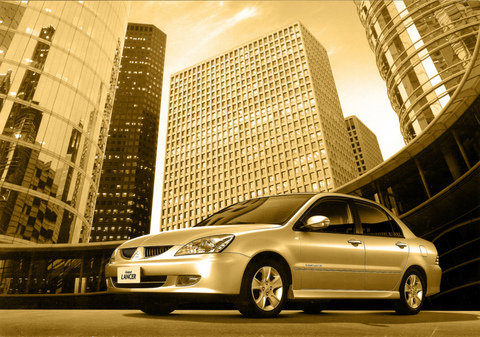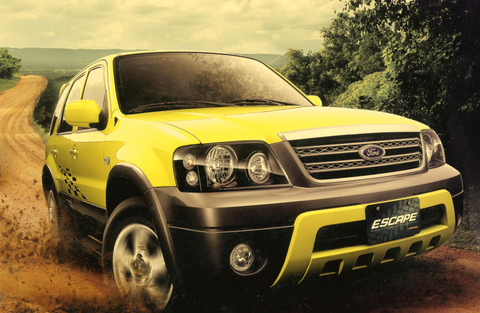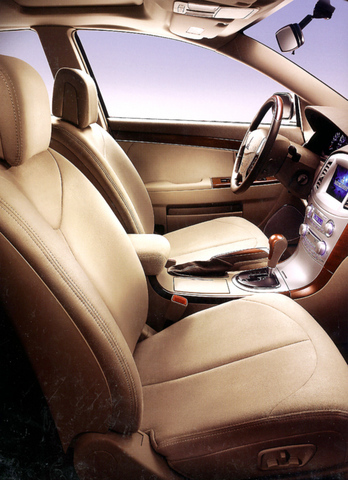At the beginning of last year the local automobile industry predicted a year of doom and gloom. Forecasts for sales of locally produced and imported cars were expected to peak at around 490,000 units. Some even predicted that the year would turn out to be the worst since 2001, when the number of vehicle registrations hit rock bottom at 347,000 units.
Even before the Lunar New Year, industry insiders were getting ready to blame the rising price of crude oil and steel on the downshift. By August it looked as if these predictions were proved correct when the nation's auto market hit an all-time mid-year low.
"The forecast was not good," said Hotai Motor Company's (

Although August is traditionally a slow month for the car market, in 2005 local venders saw sales plummet to an average of between 25 percent and 45 percent below those of previous years. Mitsubishi sales fell by 50 percent from 10,493 units to 4,097 units and Ford sales fell from 5,870 units to 3,231 units.
Even the nation's largest auto manufacturer, Hotai Motor Company, which assembles and distributes Toyota and Lexus models, didn't escape unscathed. It reported sales of a mere 5,339 units, or a drop of over 75 percent compared with July's sales, which stood at 19,558 units.
With local manufacturers resigned to defeat by mid-2005 the companies took action and went all out to boost sales in the last quarter. By November sales of Toyota had risen to just over 11,000 and Mitsubishi had eked its way back with sales returning to the region of 5,000 units.

"Everyone was very nervous in October and sales had [plummeted] across the board. It was an alert signal for us, so we introduced special promotions and gave [Toyota] dealers the go-ahead to drop prices by 4 percent to 5 percent and in certain cases even greater amounts," Yang said.
Toyota certainly wasn't alone in its choice to cut prices and give free gifts to new car buyers. Hyundai and Nissan both set out to woo possible buyers by offering incentives such as free flat-screen TVs and scooters. It might sound odd that the offer of a free TV would be pursued when someone was thinking of buying an expensive car, but the schemes worked far better then anyone would have expected.
By years end local car manufacturers had managed to surpass their expected sales figures. When the sales figures were released earlier this month Hotai had beaten the odds and managed an all-time high by selling 150,324 units out of a national combined total of 514,626 units, which was -- to everyone's surprise -- a rise of 6.3 percent from the 2004 figures.

In second place came Mitsubishi, which knocked China Motors (
China Motors and Yulon Nissan were the biggest domestic losers of 2005 with total sales coming in at 86,661 and 65,292 respectively. Ford Lio ho (福特六和) came a respectable fourth with sales numbering 55,283. According to Ford dealer Chou Fei-wen (周斐文), the continued popularity of its NT$600,000 Ford Focus and the slightly pricier NT$750,000 Ford Escape helped the company to survive what could have been a disastrous year.
"The year started off badly, but we managed to pull through and while some of our brands did drop off ... the Focus and Escape continued to prove popular with both first time and second-hand car buyers," Chou said.

Sales of locally manufactured automobiles may have bounced around in 2005, but sales of imported cars remained steady throughout the year. Special offers, free gifts and cut-price deals might have helped local venders increase sales, but no such incentives were needed to lure customers into purchasing imported cars.
The number of vehicles registered by new owners of brands such as Mercedes, Volkswagen, BMW and other popular imports may pale in comparison to those of locally-produced motors, but for overseas manufacturers 2005 was a year that offered no great surprises.
Even in August, when the local automobile industry was preparing to admit defeat, companies like Volkswagen and BMW were enjoying a pretty average year in terms of overall sales.
"You can't put imports in the same category as locally manufactured cars because the numbers are radically different," said a BMW spokesperson. "Sales were pretty good all year round. They fluctuated more than usual but it was still a good year for us."
BMW's total sales for 2005 weighed in at 5,600 units, which might seem small, especially when compared to Hotai or China Motors, but according to Volvo dealer Mr. Lin Rong-zong (
"The price of imported vehicles has traditionally been greater than that of locally produced models, which means that people looking to purchase a car within a certain budget are more inclined to look at local models," Lin said. "We sold 1,700 units in 2005 and expect to increase that number this year to somewhere in the region of 2,000."
Big spenders
In order to increase sales this year, Volvo is relying on its nifty two-door convertible the C70. With a starting price of roughly NT$2 million, the 2.5l, five-cylinder turbocharged car is, according to Lin, set to be this year's biggest seller for Volvo. It might not come off the production line until June, but Volvo Taiwan has already pre-sold 100 units.
"We're obviously not solely relying on sales of the C70, but we've already had a lot of pre-release orders and are expecting more as the deadline nears," Lin said. "I think it will certainly help us [in Taiwan] reach our target and be a big winner for Volvo globally this year."
Unlike Volvo, Volkswagen has no need to rely on a new model to boost its sales. The German car manufacturer had a pretty good year and totaled sales of 8,000 units, 3,400 of which were for the fashionable Golf. According to a Volkswagen vender, the company expects the NT$890,000 Golf to continue to be its top-selling model, but the diesel version of the GTI, which costs NT$1 million, is tipped to become one of the nation's top sellers this year.
As for how well the automotive market will fare this year, many are already predicting overall sales to increase from somewhere between 4 percent and 5
percent. According to Mitsubishi's Chang Shun-ru (
incentives now, that instead of a price war 2006 could well be the year when free gifts determine which local manufacturer sells the most cars in Taiwan.
"Incentives such as TVs and motorcycles proved really popular last year and may have saved the market," the Mitsubishi dealer said. "I think that customers have now become so used to being given something extra when they purchase a car that this year sales will revolve not around the car itself, but what the venders are willing to add to the deal."

May 11 to May 18 The original Taichung Railway Station was long thought to have been completely razed. Opening on May 15, 1905, the one-story wooden structure soon outgrew its purpose and was replaced in 1917 by a grandiose, Western-style station. During construction on the third-generation station in 2017, workers discovered the service pit for the original station’s locomotive depot. A year later, a small wooden building on site was determined by historians to be the first stationmaster’s office, built around 1908. With these findings, the Taichung Railway Station Cultural Park now boasts that it has

Wooden houses wedged between concrete, crumbling brick facades with roofs gaping to the sky, and tiled art deco buildings down narrow alleyways: Taichung Central District’s (中區) aging architecture reveals both the allure and reality of the old downtown. From Indigenous settlement to capital under Qing Dynasty rule through to Japanese colonization, Taichung’s Central District holds a long and layered history. The bygone beauty of its streets once earned it the nickname “Little Kyoto.” Since the late eighties, however, the shifting of economic and government centers westward signaled a gradual decline in the area’s evolving fortunes. With the regeneration of the once

The latest Formosa poll released at the end of last month shows confidence in President William Lai (賴清德) plunged 8.1 percent, while satisfaction with the Lai administration fared worse with a drop of 8.5 percent. Those lacking confidence in Lai jumped by 6 percent and dissatisfaction in his administration spiked up 6.7 percent. Confidence in Lai is still strong at 48.6 percent, compared to 43 percent lacking confidence — but this is his worst result overall since he took office. For the first time, dissatisfaction with his administration surpassed satisfaction, 47.3 to 47.1 percent. Though statistically a tie, for most

In February of this year the Taipei Times reported on the visit of Lienchiang County Commissioner Wang Chung-ming (王忠銘) of the Chinese Nationalist Party (KMT) and a delegation to a lantern festival in Fuzhou’s Mawei District in Fujian Province. “Today, Mawei and Matsu jointly marked the lantern festival,” Wang was quoted as saying, adding that both sides “being of one people,” is a cause for joy. Wang was passing around a common claim of officials of the People’s Republic of China (PRC) and the PRC’s allies and supporters in Taiwan — KMT and the Taiwan People’s Party — and elsewhere: Taiwan and